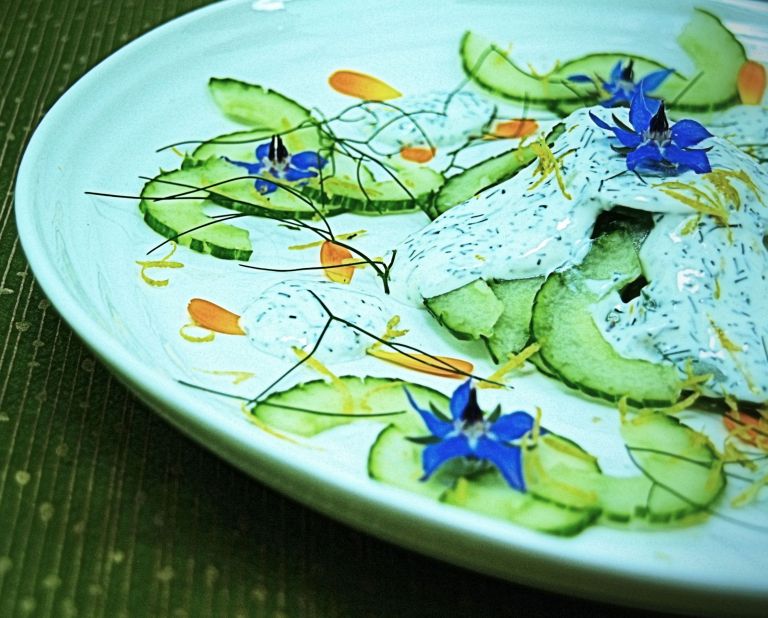Refinery29 |
This Woman Had A Frightening Reaction To An Eczema Cream
Refinery29 Juli-Anne Coward, an artist from Herefordshire, England, was just three months old when she was prescribed a topical steroid cream after being diagnosed with eczema, and she was later given a six-month course of cortisone injections after having an … |



Tag Archives: cream
Psoriasis and atopic dermatitis respond to IL-17 cream
Nitric oxide-releasing cream that targets IL-17 moving toward clinical trials.
Dermatology Times – Dermatology
This Woman Had A Frightening Reaction To An Eczema Cream – Refinery29
Refinery29 |
This Woman Had A Frightening Reaction To An Eczema Cream
Refinery29 Juli-Anne Coward, an artist from Herefordshire, England, was just three months old when she was prescribed a topical steroid cream after being diagnosed with eczema, and she was later given a six-month course of cortisone injections after having an … |
Graphic pictures reveal the horror of eczema sufferer ‘skinned alive’ by addiction to steroid cream – The Sun
The Sun |
Graphic pictures reveal the horror of eczema sufferer 'skinned alive' by addiction to steroid cream
The Sun AN artist suffered withdrawal symptoms that left her “looking like a burns victim” and in too much pain to wear clothes after becoming addicted to steroid cream for eczema. Juli-Anne Coward has spent decades battling topical steroid cream withdrawal … Woman 'skinned alive' with oozing boils and raw patches after dangerous 30-year addiction to steroid cream Herefordshire woman has overcome steroid cream addiction | Daily … |
Blue-Emu Maximum Arthritis Pain Relief Cream – Available at Walgreens!
 Blue-Emu Maximum Arthritis Pain Relief Cream available at Walgreens
Blue-Emu Maximum Arthritis Pain Relief Cream available at WalgreensIf you’re suffering from arthritis pain and want a convenient location to find Blue-Emu Maximum Arthritis Pain Relief Cream, there’s good news ahead — it’s now available at Walgreens stores nationwide!
Our patented Maximum Arthritis Pain Relief Cream joins a lineup of other Blue-Emu products available all over the United States, making it easier than ever to get America’s #1 over-the-counter cream for non-greasy, odor free relief from arthritis pain at over 8,000 Walgreens stores in all 50 states.
Topical Dermatitis – A Cream Is Your Remedy
Topical creams are the most accessible eczema treatments. Most of them don’t require prescriptions and can therefore be bought over-the-counter. With the right choice of a topical dermatitis cream and its proper application, it is almost guaranteed that you will be relieved of your eczema symptoms. But there are numerous types of eczema – ten of them, to be exact. And no single cream can effectively relieve the symptoms associated with these ten types of eczema. If you want to get rid of your eczema rash, you have to be able to assess your symptoms so you can make a good choice as to what topical dermatitis cream works best for you.
It may come to your attention that a topical dermatitis cream doesn’t seem like a treatment that’s appropriate for eczema. It sounds more like it belongs to a line of dermatitis treatments. But is there really a difference between dermatitis and eczema?
Our skin has three layers. The innermost layer is called the adipose which is comprised of adipose tissue which is made up of fat cells. On top of that is the dermis where the skin’s appendages can be found. Then, serving as a protective barrier against infection and water is the epidermis – the skin’s outermost layer. Just by the term dermatitis – with derma meaning “skin” and itis meaning “inflammation” or “infection” – it is easy to tell that it is a condition that can affect any or all of the skin’s three layers. Simply stated, it is the inflammation of any of the skin’s three main layers.
On the contrary, it’s hard to tell what eczema means especially since it has no root word like that of dermatitis. Although eczema is medically defined as any skin condition which involves the inflammation of the epidermal layer. In conclusion, eczema is a type of dermatitis that is limited to the skin’s protective layer and so dermatitis treatments like topical creams can therefore treat eczema. Of course, not all of these dermatitis creams work their magic on all ten types of eczema. Considerations have to be made about what type of eczema you have and what symptoms you manifest.
The common eczema rash is characterized by itching bumps on the skin. These bumps are usually red, indicating that there is inflammation underneath the skin. However, only two out of the ten types of eczema have these symptoms and these are contact dermatitis, and xerotic eczema. Contact dermatitis or eczema allergies result from exposure to allergens like food and environmental factors (animal fur, dander, pollen, and the like). Often, symptoms appear right after exposure to an allergen. Xerotic eczema is unique because it is the only one that’s triggered by the weather – particularly, the cold winter. Elderly patients with this condition are the ones who usually manifest red itchy pimples.
For red bumps that itch, topical dermatitis creams that have anti-inflammatory properties are the most appropriate. These treatments counteract the inflammatory process as soon as they are applied to the skin to be absorbed, resulting in the reduction of swelling and itchiness in the area. Basically, topical creams may or may not contain steroids. Steroidal creams are not advisable for long-term use though because they have negative effects on the body. Infants and children with eczema are also should not use these steroidal creams.
Two more types of eczema – dyshidrosis eczema and dermatitis herpetiformis – present the most unsightly symptoms. It is only with these two kinds of eczema that there is blistering. For eczema dyshidrotic, topical dermatitis creams that have steroids are not advisable. Creams that contain zinc oxide are preferred because of the relief that they provide without the disadvantages of topical steroids. Dermatitis herpetiformis, which causes chronic blistering throughout the body is practically treated with oral medicines. The same goes with autoeczematization or atrophic dermatitis, as well as with neurodermatitis in which there is a chronic recurrence of body rashes and itching.
The remaining four types of eczema which are atopic, stasis, nummular, and sebaceous dermatitis share almost the same symptoms involving the appearance of patches of dry skin. People other than the elderly who have xerotic eczema also have this symptom. Dry itching skin from these types of eczema is best treated with mild topical creams that relieve dry skin. These creams usually have moisturizers in them as well as anti-inflammatory ingredients to fight off the inflammation caused by eczema.
Charles Perkins is a dermatitis expert. For more information related to eczema and dermatitis, visit http://www.GoodbyeEczema.com
AVEENO ACTIVE NATURALS ECZEMA THERAPY HAND (Oatmeal) Cream [Johnson Johnson Consumer Inc.]
Updated Date: Fri, 05 Aug 2016 12:00:00 AM EDT
DailyMed Drug Label Updates for the AVEENO ACTIVE NATURALS ECZEMA THERAPY HAND (OATMEAL) CREAM [JOHNSON JOHNSON CONSUMER INC.]
Nitric oxide cream in pipeline
A nitric oxide-releasing cream to treat psoriasis and atopic dermatitis is in development.
Modern medicine – dermatology
AVEENO ACTIVE NATURALS ECZEMA THERAPY MOISTURIZING (Oatmeal) Cream [Johnson Johnson Consumer Inc.]
Updated Date: Tue, 27 Sep 2016 12:00:00 AM EDT
DailyMed Drug Label Updates for the AVEENO ACTIVE NATURALS ECZEMA THERAPY MOISTURIZING (OATMEAL) CREAM [JOHNSON JOHNSON CONSUMER INC.]
Fennel leaf and mint cream cheese dressing – low Fodmap
Just the ticket to dress thinly sliced cucumber for a fresh salad or sandwich filler. The cream cheese is lactose free but not cows milk protein free. If you have a small amount (less than two tablespoons) you could use standard cream cheese dressing as this is entirely suitable in that portion size for the low fodmap diet – this dressing is also gluten free.
Ingredients
2 Tablespoons of low lactose cream cheese
2 shoots of Fennel leaves
2-3 mint leaves
Grated lemon rind
1/2 grated cucumber

Method
Chop the fennel and mint leaves finely
Grate the rind of 1 lemon
Mix with the low lactose cream cheese
If the dressing is too thick you can add a little water to thin down the dressing, if needed.
Serve as a sandwich filler with cucumber or as a dressing on half a finely sliced cucumber as a salad. Serves 1-2 depending on it’s use.

A word about the flowers: these have not been fodmap tested but fodmap and food intolerance is all about the portion size you have and very small amounts are not likely to be an issue, however if you do wish to avoid using them that is also OK – they are not integral to the dish. These flowers used to dress the dish are borage and calendula (pot marigold) flowers, which are edible – (only use calendula petals in small amounts). There are lots of anecdotal reports of the benefits of these flowers – I have used them simply because they are pretty. If you do forage for these ensure you know what you are looking for, take care about where you are gathering – some flowers may have been treated with insecticide so it is best to avoid those – and do wash them thoroughly before use.



